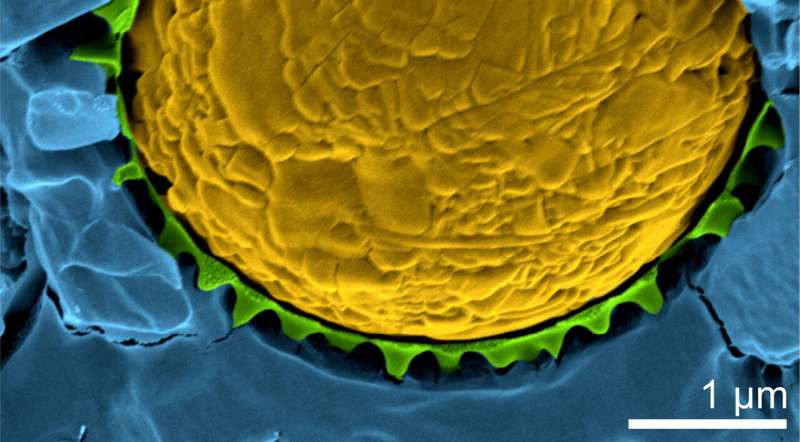Protected droplets as a new transport route for medicines
Originally published by University of Gothenburg, on November 30, 2023
An oil droplet (yellow) stabilized by temperature-sensitive microgels (green) in water (blue). The microgels maintain the stability of the oil droplets at room temperature, but when heated, their shape flattens and the emulsion dissolves. Credit: Marcel Rey
Microgels form a thin protective shell around a droplet until the temperature rises above 32°C. Then the microgels shrink and the droplet dissolves in the surrounding liquid. A study by researchers from the University of Gothenburg now reveals the underlying mechanism behind this process. The discovery could revolutionize methods of targeting medicines to specific locations within the body.
Emulsions consist of numerous droplets that are present in a liquid without dissolving and mixing with the liquid. For example, milk consists of fat droplets stabilized by milk proteins that are dispersed in water.
In many applications such as medicine delivery, it is important to not only maintain the droplet structure but also to be able to control when the droplets dissolve. This is because the encapsulated active ingredients in the droplet should only be released once the medicine has entered the body.



Comments
Post a Comment